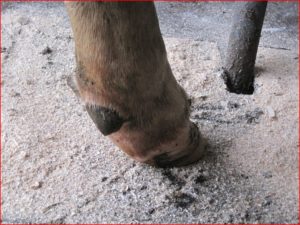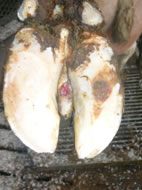
Foul in the foot
Foul in the foot or interdigital necrobacillosis is an acute infectious condition of the interdigital skin. It is initially caused by damage from stones, splinters or unsuitable walking surfaces to the interdigital skin after which an anaerobic bacterium infects the site. The earliest detectable sign is a reddened raised area typically at the bottom of the pastern, just above the division of the claws around the heels; sometimes the entire area of the sole up to the dewclaws is inflamed and warm.
Cows often stand on tip toes, pointing the effected leg to relieve the pain. If the disease is left untreated a deep wound will develop and a tyloma may form. This area of granulated tissue becomes trapped between the claws and causes discomfort. Mortellaro’s disease is often associated with this problem.
Early intervention when interdigital infections are diagnosed to prevent a tyloma developing and the further spread of deeper infections is of prime importance. When a diagnosis has been made antibiotics such as Excenel, Cobactan Tetracycline are required as well as the removal of the sharp edges in the area of the interdigital cleft and a topical application of Oxytetraspray. To prevent interdigital skin infections keep cattle in clean aisles and stalls and use formalin footbaths. These footbaths are not recommended for other open wounds such as solar abscesses and white line disease as the solution prevents healing.


